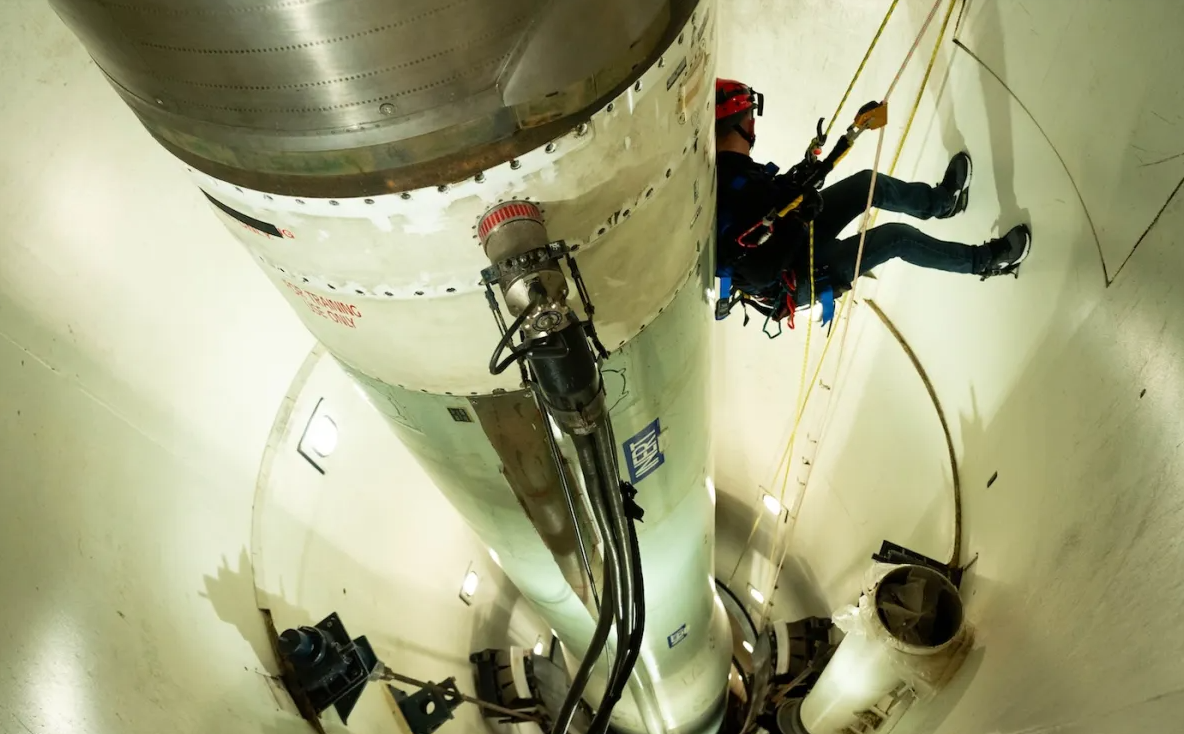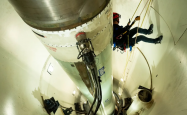Nuclear missile workers are contracting cancer. They blame the bases.
The Air Force is wrapping up a large study of the cancer risks people who maintained the nation’s land-based nuclear missile arsenal across the Northern Rockies may have faced.

At a memorial service in 2022, veteran Air Force Capt. Monte Watts bumped into a fellow former Minuteman III nuclear missile operator, who told him that she had non-Hodgkin lymphoma.
Watts knew other missileers with similar cancers. But the connection really hit home later that same January day, when the results of a blood test revealed that Watts himself had chronic lymphocytic leukemia, a type of non-Hodgkin lymphoma.
“I don’t know if it was ironic or serendipitous or what the right word is, but there it was,” Watts said.

Within the community of U.S. service members who staff nuclear missile silos scattered across the Northern Rockies and Great Plains, suspicions had long been brewing that their workplaces were unsafe. Just months after Watts was diagnosed in 2022, Lt. Col. Danny Sebeck, a former Air Force missileer who had transferred to the U.S. Space Force, wrote a brief on a potential cancer cluster among people who served at Minuteman III launch control centers on Malmstrom Air Force Base in Montana.
Sebeck identified 36 former workers who served primarily from 1993 to 2011 and had been diagnosed with cancer, including himself. Of those, 11 had non-Hodgkin lymphoma; three had died. The Air Force responded swiftly to Sebeck’s findings, launching a massive investigation into cancer cases and the environment at three intercontinental ballistic missile bases and a California launch facility. The goal is to complete the research by the end of 2025.
“
“It’s documented that there is a large cancer cluster in Montana, probably also in Wyoming.”
—FORMER AIR FORCE MISSILEER LT. COL. DANNY SEBECK
The service has released portions of the studies as they conclude, holding online town halls and briefings to highlight its findings. But while former missileers say they are heartened by the rapid response, they remain concerned that the research, which crosses decades and includes thousands of ICBM personnel and administrative workers, may address too large a population or use statistical analyses that won’t show a connection between their illnesses and their military service.
They need that tie to expedite benefits from the Department of Veterans Affairs.
Historically, the Department of Defense has been slow to recognize potential environmental diseases. Veterans sickened by exposure to Agent Orange in Vietnam, Marines who drank contaminated water at Camp Lejeune, North Carolina, and service members who lived and worked near burn pits in Iraq and Afghanistan fought for years to have their illnesses acknowledged as related to military service.
In the case of the missileers, the Air Force had already studied potential contamination and cancer at Malmstrom in 2001 and 2005. That research concluded that launch control centers were “safe and healthy working environments.” But with Sebeck’s presentation and the decision to pursue further investigation, Air Force Global Strike Command — the unit responsible for managing nuclear missile silos and aircraft-based nuclear weapons — said the earlier studies may not have included a large enough sampling of medical records to be comprehensive.
Sebeck, who serves as co-director of the Torchlight Initiative, an advocacy group that supports ICBM personnel and their families, told congressional Democrats on April 8that the Defense Department has not accurately tracked exposures to the community, making it difficult for veterans to prove a link and obtain VA health care and disability compensation.
“I had to go to a VA person and pull some papers,” Sebeck said, referring to the government system for recording service members’ environmental risks. “It says that I visited Poland once. It doesn’t mention that I pulled 148 alerts in a launch control center with polychlorinated biphenyls and with this contaminated air and water.”
PCBs are synthetic chemicals once used in industry, including missile control electrical components, such as display screens, keyboards and circuit breakers. They have been banned for manufacture since 1979, deemed toxic and a likely carcinogen by the Environmental Protection Agency.
An unarmed Minuteman III missile sits inside a silo at F.E. Warren Air Force Base in Wyoming on July 9, 2025. A missileer wrote a brief on a potential cancer cluster among people who served at Minuteman III launch control centers on Malmstrom Air Force Base in Montana. (Michael A. Richmond/U.S. Air Force)
The Air Force’s Missile Community Cancer Study compares 14 types of common cancers in the general U.S. population and the missile community and also studies the environments at Malmstrom Air Force Base in Montana, F.E. Warren Air Force Base in Wyoming, Minot Air Force Base in North Dakota and Vandenberg Space Force Base in California to determine whether they may have contributed to the risk of developing cancer.
The Malmstrom, Warren and Minot bases together field 400 Minuteman III missiles, the land-based leg of the U.S. nuclear triad, which also includes submarine- and aircraft-launched nuclear weapons. The missiles are housed in silos spread across parts of Montana, North Dakota, Wyoming, Colorado and Nebraska, staffed around the clock by missileers operating from underground, bunkerlike launch control centers.
So far, the Air Force investigation has found no “statistically elevated” deaths from cancer in the missile community compared with the general population, and it found that the death rates for four types of common cancers — non-Hodgkin lymphoma, lung, colon and rectum, and prostate cancer — were significantly lower in missileers than in the general population.
Non-Hodgkin lymphoma accounted for roughly 5.8% of all cancer deaths among people who worked in launch control centers from January 1979 to December 2020.
Early results, derived from Defense Department medical records, found elevated rates of breast and prostate cancers in the missile community, but a later analysis incorporating additional data did not support those findings. The studies also did not find increased rates of non-Hodgkin lymphoma. Air Force officials noted during a June 4 online town hall, however, that these assessments are based on roughly half the data the service expects to review for its final epidemiological reports and cautioned against drawing conclusions given the limitations.
The final incidence report will include federal and state data, including information from civilian cancer registries, and delve into subgroups and exposures, which may “provide deeper insights into the complex relationship” between serving in the missile community and cancer risk, wrote Air Force Col. Richard Speakman in a September 2024 memo on the initial epidemiology results.
本文 zblog模板 原创,转载保留链接!网址:https://2898.site/?id=13
1.本站遵循行业规范,任何转载的稿件都会明确标注作者和来源;2.本站的原创文章,请转载时务必注明文章作者和来源,不尊重原创的行为我们将追究责任;3.作者投稿可能会经我们编辑修改或补充。


